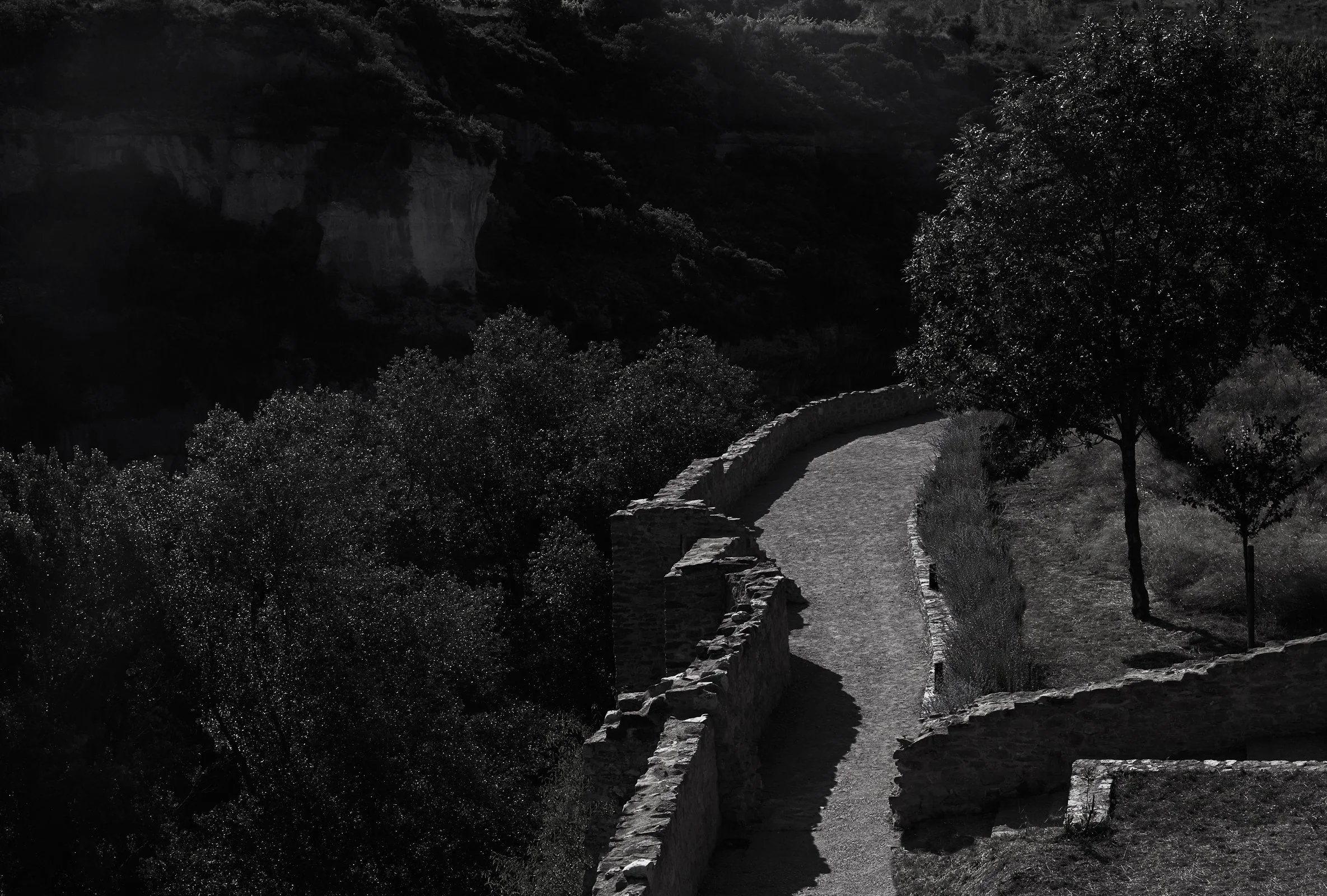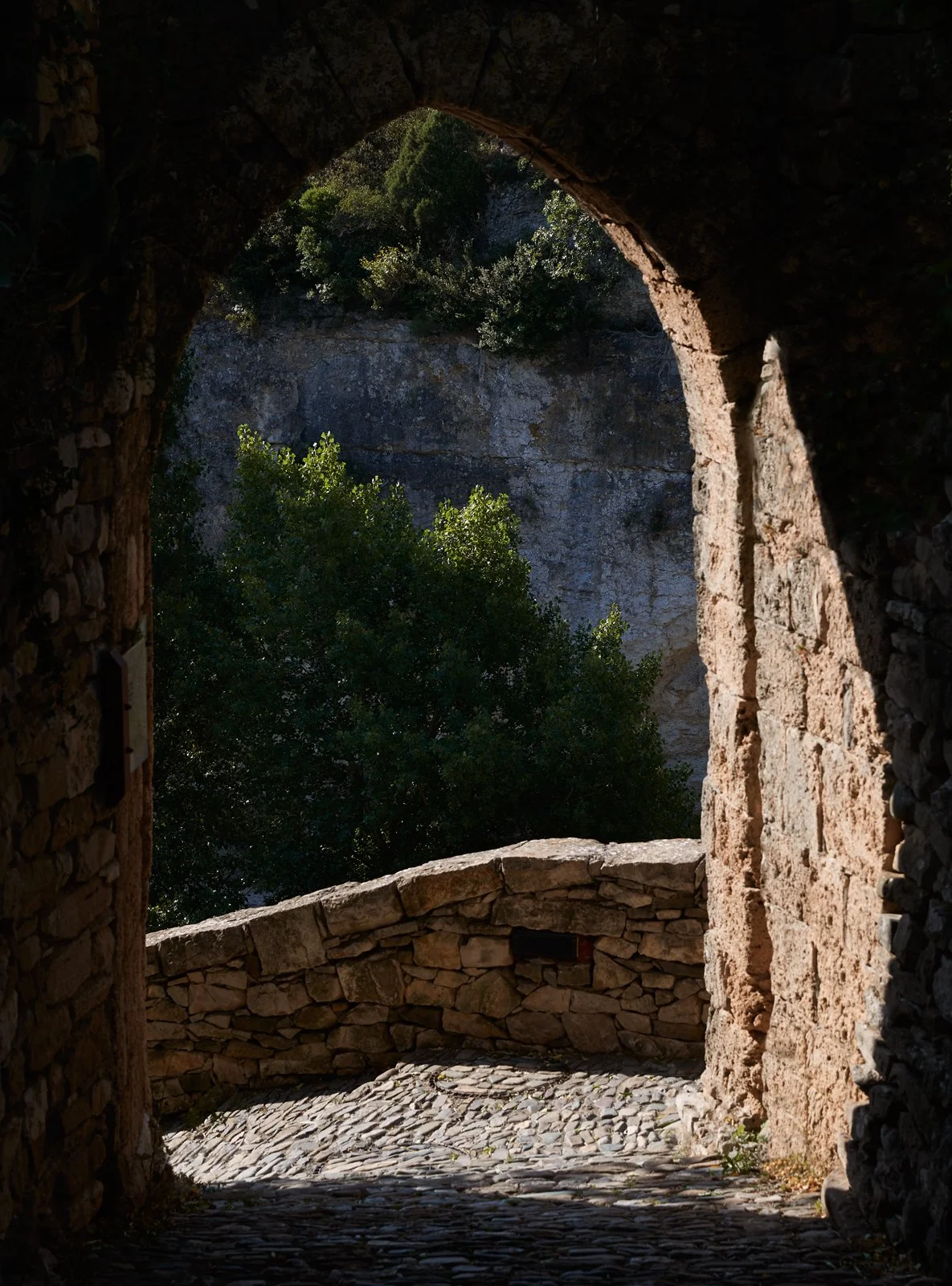MINERVE / FRANCE / PAST AND PRESENT
Mountain villages are different from other kinds of towns. Slightly removed from the outside world, with a bird’s view of what is happening around them, they offer solitude and tranquillity.
Minerve, in the department Hèrault in the Occitanie region in southern France, is a perfect example.
Located at the end of a large limestone plateau, it is a rural commune with only about 100 inhabitants (after peaking in 1851, when 403 people lived here). famous for its natural “bridges”;
Cave entrances that functioned as shelters in prehistoric times but today are popular attractions to explore.
“The town’s name is an adaptation of Minerva, Roman goddess of wisdom.”
The town’s name is an adaptation of Minerva, Roman goddess of wisdom, and surrounding the town, with its terraced gardens and cobbled streets, is the Haute-Languedoc regional national park.
Historically, Minerve was the capital of the Minervois region (and its inhabitants were thus called Minervois), and still the region’s traditional wine-production and natural scenery attracts around 300,000 visitors per year.
Things haven’t always been as idyllic as they are today, and for many French school children, Minerve is mainly associated with the events of 1210, when the town was the site of the first pyre of the Albigensian Crusade (in French: Croisade des albigeois), a 20-year military campaign initiated by Pope Innocent III. The aim was to eliminate Catharism in Languedoc.
Catharism (from the Greek word “katharos”, meaning “clean” or “pure”) was an unorthodox interpretation of Christianity, and became established in Western Europe, particularly in the Languedoc region, in the 11th century. It originated from an anti-materialist reform movement,
More seriously, at least in the eyes of the Catholic church, was that their theology was dualist, meaning that they believed in the evil of the physical world, which conflicted with Catholic doctrines, and was thus a threat to the hegemony of the Catholic church.
During the Albigensian Crusade, Catholic crusaders systematically crushed the Cathar movement, not only because they were considered a religious threat to the church but also for political reasons. The Cathar movement was supported by local nobility – already hostile towards the (Catholic) French king, they used the religious movement to undermine his power.
The pyre occurred after a series of battles, which slowly saw the army of 10,000 Crusaders move from Lyon and to the southeast of France. By June 1210, they had reached the fortified Minerve, which soon became besieged.
The town was heavily bombarded, and the bombs hit the well that supplied the town with water, which led to the surrender by the Viscount a few weeks later.
The crusaders offered the town’s Cathars to convert, but only three women accepted this possibility. The remaining 140 people refused, and were subsequently burned at the stake.
Supposedly many entered the flame voluntarily, proving that they were ready to die for their faith.
In later years, many historians have viewed this event as an act of genocide.
“The town will look like a fairy-tale town, hidden away from the rest of the world among the mountains and vineyards of Languedoc.”
Today, only a few things in the village remind visitors of its dark and dramatic past. At the Musée Hurepel, the visitor can view a re-enactment of the crusade against the Cathars in miniature version.
There is also a monument of peace – “La Colombe” by artist Jean-Luc Séverac, commemorating the Cathar victims – as well as a replica of the “Malvoisine”, the most powerful of the catapults used during the siege.
The town also offers several restaurants, art galleries and even has its own archaeological museum, and for those who are unaware of the historic events, the town will look like a fairy-tale town, hidden away from the rest of the world among the mountains and vineyards of Languedoc.
“Today the town is listed as one of the most beautiful villages in France.”
The surrounding areas has several pathways to explore, many with spectacular views. Of particular historical importance is the north part of the village, where a vestige is the only remains of the viscount’s former castle.
In historic time, there used to be a drawbridge that let people into the town, but today there is only part of a tower still standing, as the locals throughout the centuries would use the stones of the castle to build their own houses.
Perhaps they were right in doing so, as today the town is listed as one of the most beautiful villages in France.
TO LISTEN TO
Sslowness-soundtrack to Minerve
TO STAY
Charming B&B not far from Minerve.
1 Chemin des Portes
Saint-Pons-de-Thomieres
Hèrault
B&B in an old bourgeois residence, originally built for the Eloi family, important winemakers in the area.
1 Avenue d’Homps
Olonzac
Hôtellerie du Chàteau de Floure & Spa
Beautiful hotel in a small castle, with its own restaurant.
1 Allée Gaston Bonheur
Floure
A gîte in Minerve with wonderful views of the valley.
29 Grand Rue
Minerve
TO EAT AND DRINK
Restaurant la Table des Troubadours
Operated by Paula and Alain Maynadier, this restaurant also offers a gîte to stay in as well as a small house in the couple’s vineyard.
1 Rue du Porche
Minerve
+33 4 68 91 27 61
Château Minerve
Not so much a place to eat, but a place to drink wine from the vineyard Château Minerve.
8 Rue des Martyrs
Minerve
+33685097897













